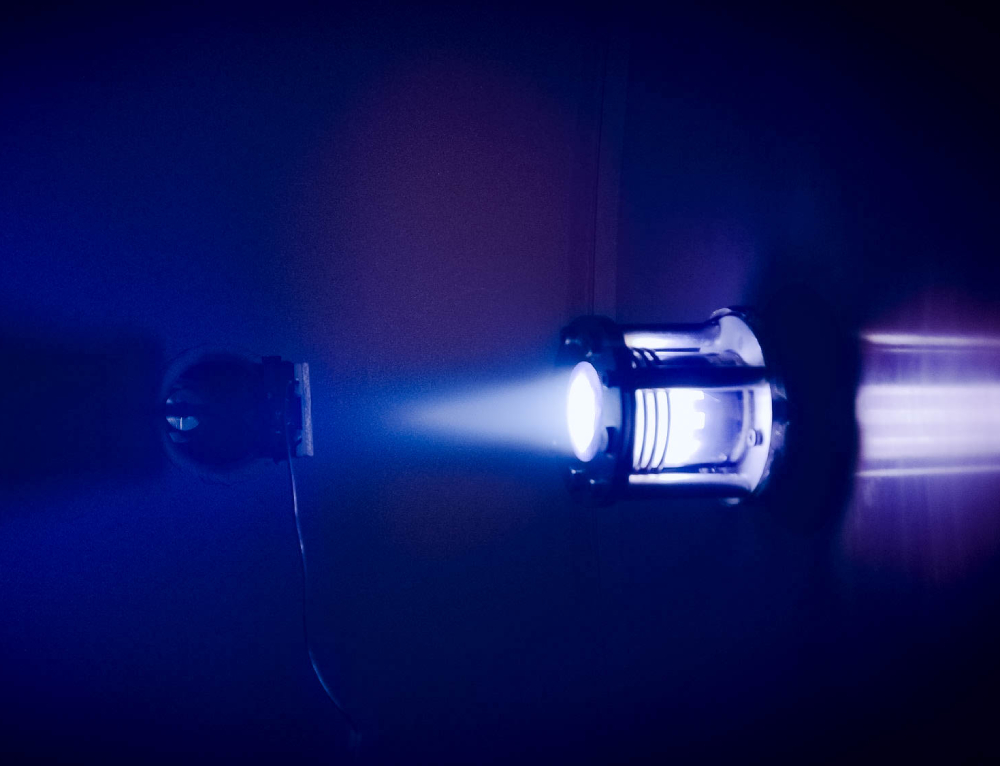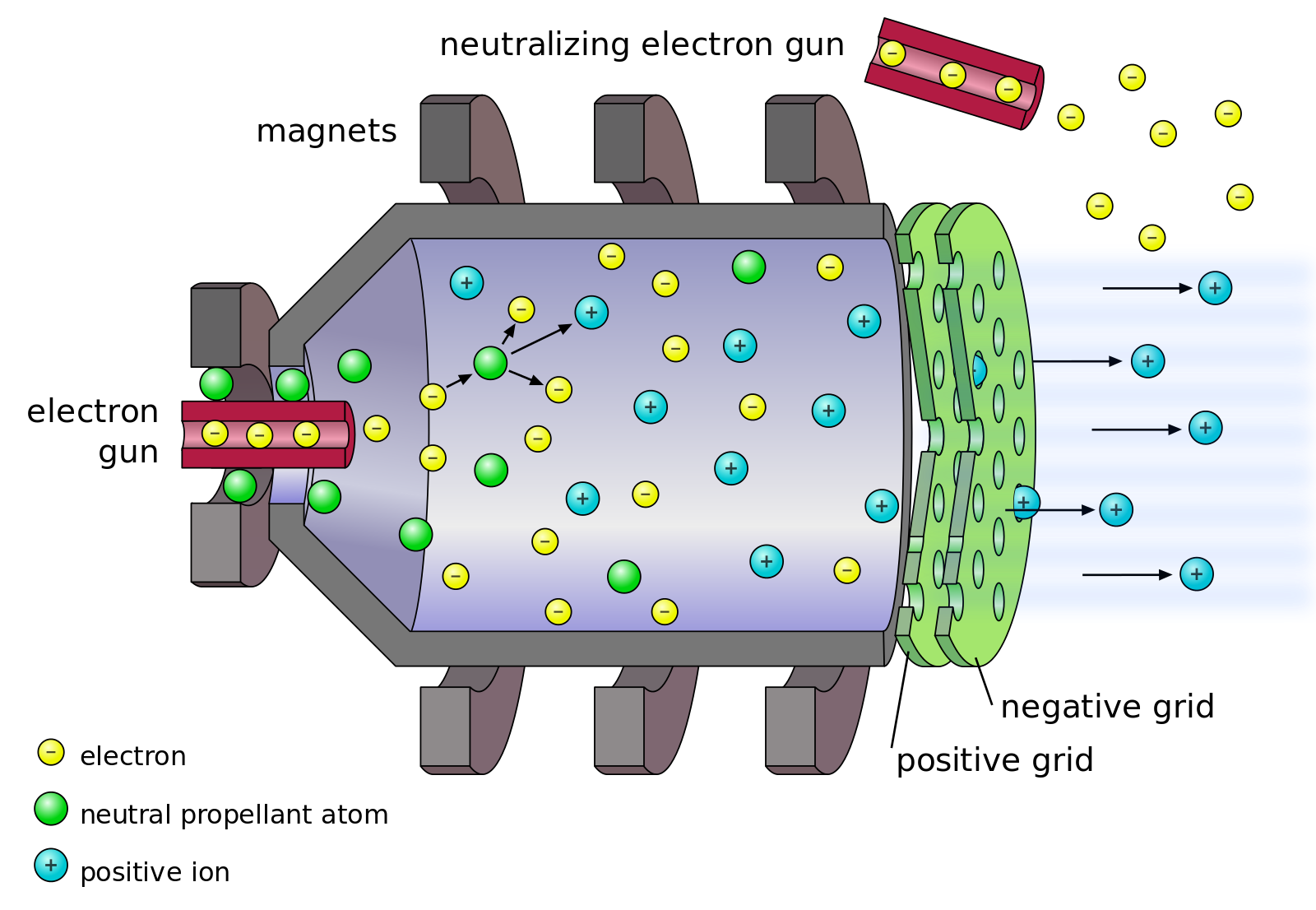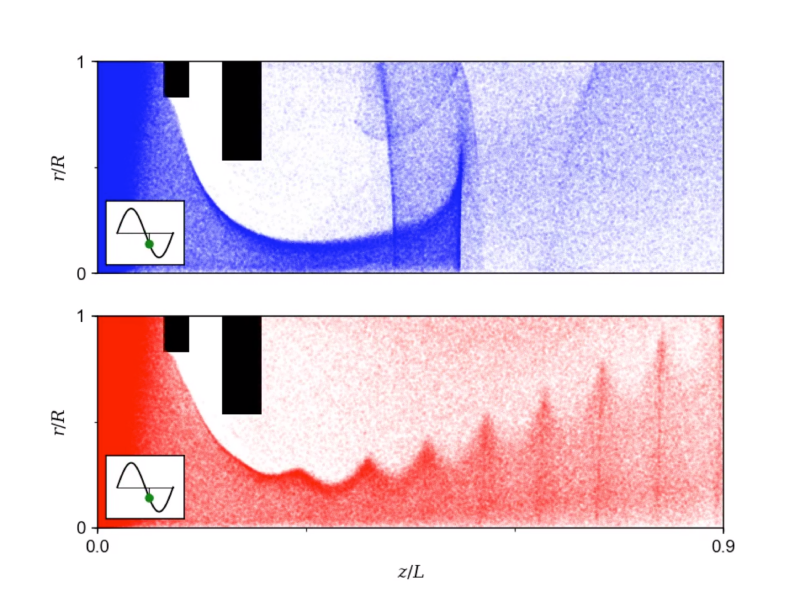RF AccelerationConventional ion enginesConventional gridded plasma thrusters, also known as ion thrusters or ion engines, work by using a constant electric field (applied across a set of grids at the exit of the thruster) to accelerate positive ions away from the satellite at high velocity, thus generating thrust. But to prevent the satellite from becoming continually charged as these positive ions are lost requires negative charges, usually electrons, to be ejected at an equal rate. In almost all electric propulsion systems this is achieved with a separate device known as a neutralizer.
|
 |
 |
The neutralizerAlthough neutralizer technology is very mature, it remains a challenge to scale these devices down to small sizes. Neutralizers require additional power supplies and some even require a separate propellant gas feed and control system. These factors all increase the overall mass, volume and complexity of a propulsion system, and can again limit the amount of miniaturization possible. The use of a neutralizer can also increase the operational risk of an electric propulsion system and, if the neutralizer fails, the thruster may no longer be able to function correctly. This was a problem encountered on the Hayabusa spacecraft of the Japan Aerospace Exploration Agency (JAXA) on its return voyage from a near-Earth asteroid in 2007-2010.
|
ThrustMe's novel RF accelerationThrustMe’s other major innovation (along with iodine) is the use of a novel RF acceleration technique that allows the extraction of both ions and electrons from the thruster, thus removing the need for a separate neutralizer. This concept has led our team to revisit the fundamentals behind ion engines and rethink 50 years of technology development. The constant electric field, applied across the set of grids of conventional thrusters is replaced with an oscillating radio-frequency (RF) electric field. The ions, which have a much larger mass than the electrons (think wrecking ball vs. ping-pong ball), cannot react to the rapidly oscillating electric field and ‘see’ a time-averaged constant field. Thus, the ions are extracted and accelerated as they are in conventional gridded thrusters. The electrons, however, can follow the oscillations and are able to escape the thruster in pulses. This unique extraction technique prevents the satellite from charging over time thanks to a self-regulating electrical circuit inspired by a technique widely used in the semiconductor industry: if too few electrons escape the thruster during one pulse, the electric field adjusts slightly so that more electrons escape during the next one. For more information on all of the research that went into this innovation, visit our page our scientific papers. Work on this technology has earned Dmytro Rafalskyi an award by the President of Ukraine for Young Scientists in 2012 and Ane Aanesland the Medal of Innovation from the CNRS. |
 |